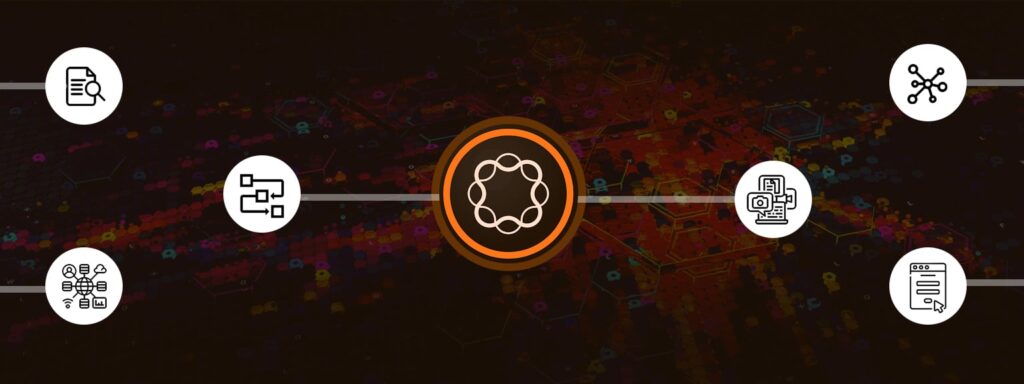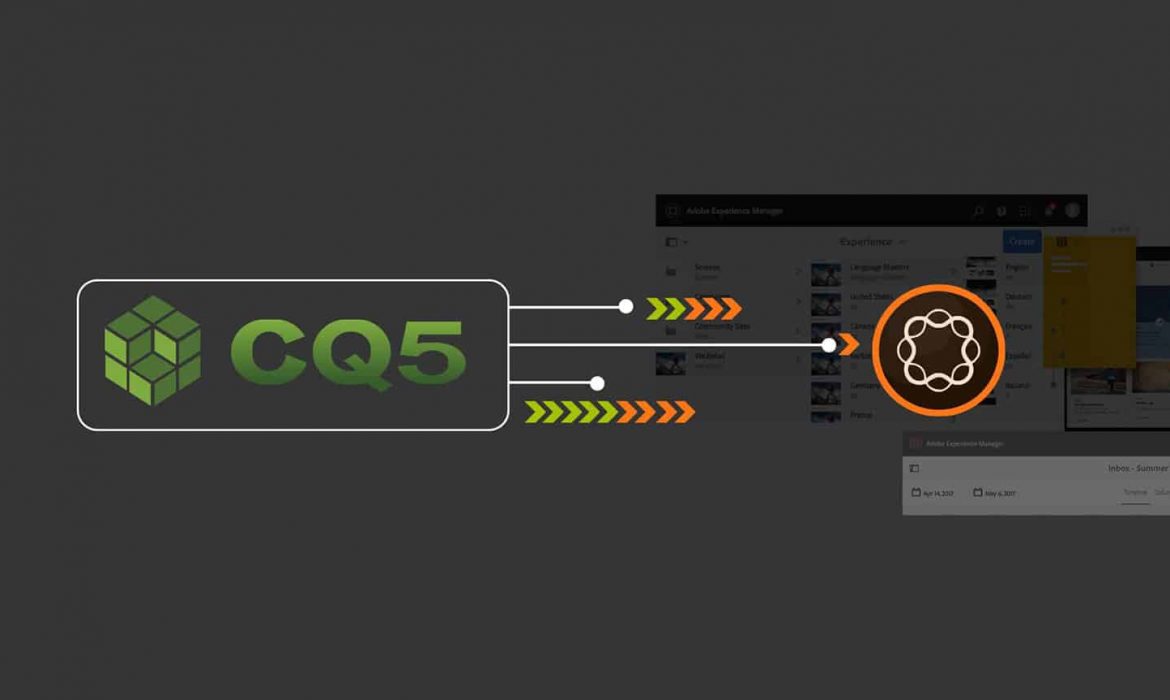Adobe CQ5 Offering Trending Digital Experience
In a competitive business environment, it is a challenge for an organization to take control of its brand presence. That means, every company have to reach its target audience to drive sales of its brand. In other words, the more an organization takes a brand into its customer base, the better it gains profit. One best way to maintain brand presence in a digitally-paced business world is going online because online brand presence plays a major role in a company’s business growth. According to World Internet Statistics, almost 40% of the world’s population is using the internet by 2013 with a growth rate of more than 673% from the last 14 years. These stats offer a clear picture of how the digital experience has been dominating the world from the beginning of 21st century. Also, several companies have been maintaining their own websites to reach their target audience through the internet. However, choosing the right technology will always result in positive outcomes. One such technology is Adobe CQ5, a technology offering trending digital experience.
Organizations Implementing Adobe CQ5
Several major organizations including but not limited to Audi, Volkswagen, Hyatt and TE Connectivity have been using Adobe CQ5, also known as Adobe Experience Manager, to improve their online brand presence. Here are some implementation examples of Adobe Experience Manager by major organizations for their business needs.
- Hyatt supporting travelers on a global scale using Adobe CQ5:
Hyatt Hotels, an American multi-national hospitality giant, has been manually operating over 600 websites in ten languages using Adobe CQ5 to offer its customers a high-end digital experience. The main focus of the company is to enable customers to plan and manage hospitality while they travel, just by using their websites. Using Adobe Experience Manager, Hyatt is providing a huge amount of high-end content to its customers through a different medium including tabs, mobile phones, computers and more. According to Hyatt, they managed to move more than 600GB of images to its database using digital asset management capabilities from Adobe Experience Manager. Using Adobe CQ5, it has also managed to publish more than 500,000 web pages globally. More than 250,000 people visit their websites on a daily basis.
1.1 An image showing digital experience of Hyatt’s website - Adobe CQ5 driving Audi to innovate:
elevated its digital brand experience by using digital asset and web content management capabilities of Adobe Experience Manager. The company is currently operating 93 websites in 40 different languages with an aim to offer a high-end digital experience to convey the message about their vehicles. Audi offers its customers the flexibility to compare vehicles based on specifications, pricing, features and more through their websites before visiting a showroom. Using Adobe CQ5, it has also integrated the Audi Configurator feature, used by more than 90% of its site visitors, to build the model of their choice with options to customize features. Using Adobe Experience Manager, Audi’s dealers and web teams are developing websites, without any technical knowledge, to offer better online customer experience. Every year more than 156 million visitors are navigating through Audi websites for information.
1.2 An image showing the digital experience of the Audi Configurator feature
Why to choose NextRow for Adobe CQ5 implementation?
There are several organizations offering CQ5 development and AEM consulting services but choosing the right one will always matter. To serve all your digital needs, talk to us. We always differ from other companies with our unique services. At NextRow, we have the most creative, experienced and Adobe certified CQ5 developers to assist you in developing a great digital experience using Adobe CQ5 enabling you to reach your target audience globally. We also have hands-on experience in integration of marketing tools such as Eloqua, Marketo, Adobe Campaign with AEM. We also have delivery teams across all time zones to serve you better. We offer different services with Adobe CQ5 including:
- AEM consulting and implementation:
Our team of experts will offer you their expertise in Adobe CQ5.x to enable you to implement AEM suite of products in offering your customers a highly personalized digital experience.
- CMS migration to Adobe CQ5:
If you want to migrate from different content management system (CMS) tools to Adobe CQ5 then we will be at your service with single request. We have a professional team of experts with deep experience to migrate a range of CMS tools including SiteCore, Acquia, Drupal, Magnolia, Interwoven TeamSite, Jahia, dotCMS, Alfresco, Vignette and custom CMS to Adobe CQ5.
- AEM maintenance and support:
We have gained the trust of our clients by not only offering CQ5 development services but also providing support and maintenance services to organizations having their own Adobe CQ5 To meet digital needs of organizations, we also develop custom modules for Adobe CQ5.
- AEM, Adobe Marketing Cloud integration:
To reach target audience globally and offer high-end digital experience to customers of our clients, we will integrate Adobe CQ5 with different tools including Adobe Scene7, Adobe Test&Target, Adobe Social, Adobe SiteCatalyst, and Adobe Audience Manager in the Adobe Marketing Cloud.
- Integration with third party applications:
Our team of experts will also integrate AEM with different third party applications including Customer relationship management (CRM), E-commerce and billing.
Besides this, NextRow also offers Adobe CQ5 training services with certified trainers, who have deep experience with major AEM projects. Different types of training programs include CQ Author Training, CQ Developer Training, CQ Advanced Developer Training, CQ System Administrator Training, AEM Digital Asset Management, AEM Social Communities and more.
Knowledge to effectively implement Adobe Target solution to your existing digital platforms. We have highly skilled professional and Adobe Certified digital consulting teams to deploy it and help you create a robust digital infrastructure. For any query or help contact us at +1-847-592-2920 or follow the link
Evolution of Adobe Experience Manager From Adobe CQ5
In today’s fast-paced digital age, customer expectations are changing daily. Most organizations are investing in new technologies to digitize their business in a way to reach the expectations of their customers. One such trending technology is Adobe Experience Manager (AEM), formerly known as Adobe CQ5.
AEM is a powerful platform with amazing features, such as drag-and-drop content authoring, digital asset management, multi-channel publishing, personalization, and analytics. You can integrate with other Adobe Marketing and Creative Cloud Products.
In this blog, we will go through AEM and discuss what it is, its history, technical background, benefits, and more.
What’s an AEM or Adobe CQ5?
Adobe Communique 5 (Adobe CQ5), currently known as Adobe Experience Manager (AEM), is a web-based content management system for high-end digital experiences. It allows businesses to create, manage, and deliver digital content across various channels such as web, mobile, and social platforms. It also helps in creating, editing, and publishing content along with digital assets and workflow management.
It supports a range of analytics and personalization tools, which enable organizations to track user behavior, segment audiences, and deliver personalized experiences based on user data. Adobe AEM also helps businesses to drive sales by attracting customers’ attention.

History
AEM has a quite complex history starting with CQ5, which is a version of Day CQ portfolio developed by a Swiss-based software company Day Software in 2008, following Day CQ 3.5, 4.0, 4.1, and 4.2. Adobe Systems renamed Day CQ5 as Adobe CQ5 after acquiring Day Software in 2010. Following the release of the fifth version of CQ5 i.e., 5.5, Adobe renamed it as Adobe Experience Manager (AEM) in 2013 with a sixth version AEM 5.6. Since then, Adobe released various versions of AEM and the latest is 6.5.
After the acquisition, Adobe integrated it into its existing suite of marketing and creative tools, including Adobe Marketing Cloud, Adobe Creative Cloud, and Adobe Analytics. In 2013, the first version of AEM as a standalone product has been released that can be used without Adobe’s other marketing tools.
Adobe keeps enhancing AEM’s capabilities and adding new features such as digital asset management, social media integration, and mobile app development. Now, its cloud version is also available. Adobe continues to work on AEM’s development while focusing on its cloud capabilities, AI and machine learning capabilities, and integration with other Adobe products and services.
Technical Background
The server of AEM is platform-independent as it is based on Java. AEM is also based on the Apache Sling web framework that simplifies the development of RESTful web applications.
It is an integration of both application-level, as well as infrastructure-level functions.
At the application level, it enables users to manage content, mobile apps, digital assets, websites, e-commerce, social communities, and more.
At the infrastructure level, it can be deployed in a standalone mode or as a web application in a third-party server. The Sling Web Application Framework can reduce the overhead of developing content-oriented applications and store all the data (from authors) and code (from developers) on its Java Content Repository (JCR) database.
All in all, its technical architecture is designed to offer a flexible, scalable, and customizable platform for digital content management and delivery.
Benefits of Using AEM
AEM helps in web content management and digital experience delivery. Here are some of the key advantages:
- Robust Content Management
It offers a robust set of tools for content creation, management, and delivery. Content creators can easily create and edit content using these tools while providing workflows for approval and publishing.
- Build Amazing Websites
Develop high-end websites for all types of devices to manage on-site and in-store experiences by using different methodologies. It helps companies increase sales.
- Digital Forms
Use digital forms from AEM to provide a user-friendly experience to the end users and can also offer quick responses after submission.
- App Promotion
Edit interfaces of mobile apps provided by Adobe CQ5 to change data, import digital assets from other mediums, and improve the performance of apps to promote a brand.
- Build a Brand
Build their brand by using AEM brand marketing capabilities to create streamline for brand assets approval; search, deliver and organize brand assets; and also share personalized experiences to target channels and more
- Multi-Channel Delivery
It enables content delivery across multiple channels, including websites, mobile apps, and social media platforms. Brands can deliver a consistent experience across all touchpoints to their customers.
- Personalization
AEM can help you increase engagement and conversion rates with its built-in personalization capabilities that allow marketers to deliver personalized content to different user segments based on factors such as demographics, behavior, and location.
- Integration with Creative Tools
AEM can easily integrate with creative tools such as Adobe Creative Cloud, allowing designers and developers to work seamlessly within the same platform.
- Scalability
AEM is based on a scalable architecture that enables it to handle high volumes of content and traffic. This makes it a good fit for any organization that has complex digital experience requirements.
- Flexibility
As it is highly customizable so it can be tailored to meet your specific needs including customizing workflows, templates, and integrations.

AEM’s Future Scope
The digital landscape continues to evolve with an emphasis on delivering personalized and omnichannel experiences to customers. So, AEM is also expected to continue to evolve and play an important role in the digital experience platform (DXP) market.
Adobe has already introduced cloud-based versions of AEM- Adobe Experience Manager Sites as a cloud service and Adobe Experience Manager Assets as a cloud service. Its AI and ML capabilities such as Smart Tags for image recognition already enhance the user’s experiences. Additionally, AEM’s capabilities in this area, such as its audience segmentation and personalization tools, are likely to become increasingly important for organizations looking to stay ahead of the competition.
All in all, we can expect AEM to continue to be an important player in the DXP market, with a focus on cloud-based solutions, AI and ML capabilities, and delivering personalized, omnichannel experiences to customers.
If you need any help with AEM integration, implementation, and usage, connect to our experts at info@nextrow.com.



